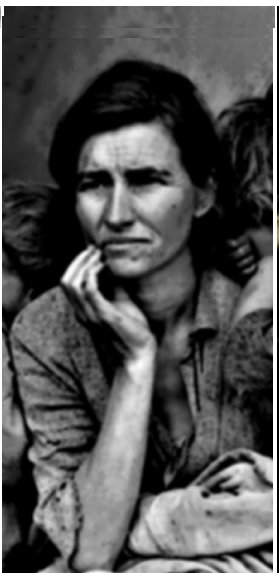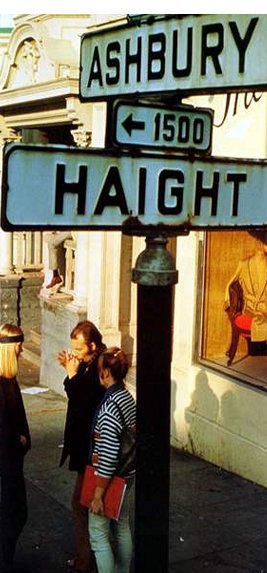African
American City
Limits Fatima Blanca C. Muñoz
In the fall of 2005, Josh Sides joined the Department of
History at Cal State
University of Northridge. Sides
received his PhD from University of California,
Los Angeles in 1999. He served as a
Kevin Starr Fellow at the University of California Humanities Institute at Irvine
from 2000-2001. At CSUN, Sides teaches graduate and
undergraduate courses of the history of Los Angeles,
San Francisco, history of African
Americans, and historical methods and theory.
The city of Los
Angeles today is far different from what it was
seventy years ago. It has been radically transformed in large part due to
African Americans. Josh Sides�� L.A. City Limits: African American Los
Angeles from the Great Depression to the Present describes the lives of
African Americans before and after the Great Migration and shows how they
��radically altered their own lives [and] permanently transformed urban America��.
African Americans were ��important shapers of urban destiny�� because they affected
the evolution of the city through their everyday activities, such as where they
worked, where they lived, where they attended school, and where they ended
their day.1 Sides focuses his book on the
issues that have been at the center of the African American��s struggles,
including jobs, housing, education, and political representation.2
The title of his book gives the reader a glimpse into the book��s larger
argument, which was that ��life in the city perpetuated the limitations found in
the rural South��.3
African Americans fled the South
for the promises the North seemed to offer. As a result of this Great
Migration, the black population continued to increase, which forced whites to
interact with blacks.4 The
new migrants were forced to live in overcrowded slums until they could earn
enough money to move. Consequently, the existing black community had mixed
feelings about these new migrants. There were some who were able to sympathize
with the new migrants because they knew and understood their difficulties as
new arrivals. These blacks would even offer the migrants a place to stay until
they were ready to settle on their own. Others felt embarrassed by these
migrants because they were afraid that they would confirm popular stereotypes.5 The main
reason African Americans migrated west was to escape the injustices of the
South and improve their lives and the lives of their children. The West seemed
to promise more opportunities and freedoms than the South. However, even though
it was an improvement from the South, racism still existed. For example, in Los
Angeles, residential segregation was ��maintained
through a web of racially restrictive housing covenants�� and was enforced by
the California Real Estate Association.6 While African Americans were
allowed to purchase property, they could not live there. Although purchasing
houses in the North may have been a lot easier than in the south, job
opportunities were not. Racial discrimination was possibly ��the greatest
barrier to economic prosperity for black men and women�� because it limited
opportunities for African Americans.7
Because there were no federal laws prohibiting racial discrimination, employers
and mangers were free to be chose whomever they wanted to employ.
Unfortunately, no white employer would ever hire an African American for a job
that a white man wanted. In a survey that questioned businesses whether they
would employ a competent African American, 30 out of 104 employers refused to
do so ��under any conditions��.8 Despite all of this, the West and the North were, in many
ways, an improvement over the South, especially since African Americans were
free from the fear of physical violence.
World War II opened a new window
for everyone, including African Americans, by creating new job opportunities. In
the twenty years following the war, African Americans made ��the greatest
economic advances they had ever experienced.��9
Nonetheless, there were still many barriers to their economic progress that
made economic equality almost impossible for the African American. It was hard
for blacks to be employed because of the belief in white superiority. In
addition, black employment relied on the industrial employers and managers, who
played a critical role in industrial segregation. While most all industrial
employers participated in racially discriminatory hiring and promotion
practices, some employed black workers who replaced white workers. Despite
their employment, African Americans, along with Mexicans, ��never held skilled jobs.��10 The steel industry began to rise after
the Second World War, and this brought new opportunities for the minorities.
African Americans and Mexicans were easily hired into this industry because the
employers could easily place them into departments that no white man wanted.
The black man, who was desperate for a job, had no choice but to work where he
was placed. The National Association for the Advancement of Colored People
(NAACP) constantly pressured the federal government to abolish segregation. In
1942, an editorial page in The Crisis professed that ��now is the time not
to be silent about the breaches of democracy.��11
In that same year, there was a labor shortage because of the war. Many
businesses, especially large defense plants, contacted the United States
Employment Serves (USES) in search of female labor, but refused to hire black women.12 In the later
years, defense industry employers began to hire more and more African American
females. However, though it would seem harder for black women to find a job due
to double discrimination, as they were both black and female, this was not the
case. Surprisingly, defense industry employers were more tolerant of and felt
less threatened by black women workers.13
Employers probably felt this way because they believed that the women would work
��only for the duration.��14 This was far
from the truth, though, as African American women had no intention of leaving
the workforce. Although the number of black workers remained small, there was a
��strong employer preference for black women�Kso they outnumbered the men.��15 Managers and employers might have felt
threatened by black men and thought of black women as a replacement for
something better to come. Employers also preferred lighter skinned black female
believing they were more attractive than darker skinned, and would therefore
attract more customers.
African Americans�� options were not
only limited in the workplace, but also in the housing market. According to
Sides, the main purpose for blacks leaving the South was to find a better
future for them and their children. Supporting his argument, he states that
African Americans searched for nice homes in safe areas and ��longed for
integration into communities that could provide superior schools for their children.��16 Residential integration meant so much
more to the blacks than owning property, since put more emphasis on their
��dignity, opportunity, and their children��s future.��17
They wanted to prove that they were fully capable of achieving their dreams.
Nevertheless, there were many factors that prevented them from attaining this
dream. Many white parents objected to having their children attend the same
school as black children, and thought if it as an experiment. In order to
prevent this residential integration, white homeowners developed several plans
to keep African Americans out of their neighborhoods. Many of them secretly
sold their houses and moved into different towns. However, the blue collar
workers began to protest against this integration because they could not afford
to purchase a different house elsewhere. They maintained segregation through
discouragement of ��home sales to prospective black buyers, vandalism, cross
burnings, bombings, and death threats.��18
Multiethnic neighborhoods soon turned ��solid black��19
as a result of not only white resistance but also ��the changing social,
economic, and political status of other minority groups.��20.
In the 1960s, many events occurred that resulted from the past few decades of
struggle for equality. This struggle was led by the thousands of African
American migrants who escaped the South in order to ��finally and fully share on
the country��s new prosperity.��21 Many
whites believed that they were being challenged because blacks wanted to
interact with them. This was far from the truth, as African Americans ��simply
wanted the freedom to enjoy [life] without harassment.��22
During this time, African Americans made their demands well-known, which also
resulted in a wave of anti-black racism in the city. The Los Angeles Police
Department (LAPD) considered it a part of their job
to reinforce these racial barriers. They began to threaten blacks, and that
became a ��daily and sometimes deadly reality.��23
Regardless of where they lived, how educated they were, how much they earned,
and what their profession was, blacks lived in a constant fear of being
harassed by the police and their neighbors. People like Martin Luther King, Jr.
inspired blacks to fight for freedom no matter where they were in the United States.24 On June 14, 1963, the United Civil
Rights Committee (UCRC) led the largest march for
black civil rights in the history of Los Angeles.25
Events like these continued to occur throughout the decade in the hopes that
African Americans would finally be recognized and gain their rights.
In his book, Sides focuses on the
center of black struggles for equality. The book begins with the Great
Migration and the reasons behind it. African Americans desired a change in
their lives that did not limit or prevent them from following their dreams, and
��thought that they were abandoning the bigotry and brutality of the South for Los
Angeles�� promise of economic opportunity and racial harmony.��26 As a result of their migration, they
not only transformed their lives but also transformed America
itself. Through their desire for change, ��they affected the decision-making
processes and policies of Los Angeles��
Sides constantly repeats that while Los Angeles
was an improvement over the South, it did have its limits, such as in the
workplace and in housing. 27 He discusses what the West both could
and could not offer to the African Americans, and he focuses his attention on
the city of Los Angeles, proving
that the West, like the North, was an appealing destination for African
Americans. Sides believes that ��the history of urban America
is inseparable from the history of race in America.��28
A history professor at Cal
State University,
Northridge, Sides writes and teaches about the
American urban experience, particularly focusing on California.
He teaches graduate and undergraduate courses on the history of Los
Angeles, San Francisco,
and California as well as the
history of African Americans.29 Sides saw
Mexicans as competitors of African Americans in the workplace. According to
him, Mexicans had better chances than blacks because whites often looked upon
them more favorably. While Mexicans, along with other minorities, were able to
rise in their social status because they were gradually accepted by some white
people, African Americans could not. Published in 2003, Sides�� book was most
likely influenced by the liberalism of the 1990s, providing insight into what
African Americans had to endure during the Great Migration. There were more
sources available to Sides than to most books published before his.
Emily E. Straus, a history professor
at Suny Fredonia, thoroughly analyzes Sides�� book and
agrees with his thesis, which is ��though L.A.
was an improvement over the South, it was no panacea: the city of Los
Angeles had its own racially defined limits.��30 According to Straus, Sides uses many
different types of sources, including oral histories, to add life to his book.
Through these histories, he ��gives voice to migrants and native Angelenos��.31 In addition to Straus�� critique,
she believes that although Sides could have put these oral histories to better
use, he does a good job in highlighting their voices. This provides the reader
with accounts of how difficult life was for blacks and shows how the lives of
African Americans transformed dramatically. Unfortunately, Sides ��occasionally falls
into the trap of describing Los Angeles
as a white and black world.��32 Despite
this, he is able to reveal how personal certain experiences were to the African
Americans. Sides also uses a wide range of archival
collections, thereby providing more evidence to support his arguments. Although
the book provides good coverage from the twenties to the sixties, Sides seems
to wrap up everything in the last chapter and the epilogue. He could have
elaborated more on the Rodney King beating and riots as well as the rise of
gang culture, which were both very important in the shaping of Los
Angeles. These events greatly affected the lives of
African Americans and transformed the city of Los Angeles,
and yet Sides ignores them.
In his book, Sides focuses upon the
African American struggles from the thirties to the present. He also addresses
the Latinos who, according to him, competed against the African Americans in
the workplace because they were more widely accepted. Sides
also lists events contributing to the evolution of certain aspects of
African American life, such as how their once multiethnic neighborhood, became
a neighborhood full of only blacks. While Sides covers the beginning of the
Great Migration very well, he tends to over-summarize the 1980s and 1990s,
which were just as important as previous time periods. Also, Sides digresses
from his main points at certain times, focusing on Latinos instead of African
Americans. Although the examples given by Sides about the Latinos are relevant,
there are points where it seems like his book is about Latinos rather than
African Americans. Also, when Sides addresses the Latinos, it is often
distracting and hard to follow. Additionally, there are times where he is
inconsistent and difficult to understand. However, by focusing his study on Los
Angeles, Sides fulfills his argument, which is that
��the West proved an attractive destination for African American migrants.��33
California
was greatly influenced by the events occurring in other states, especially in
the South. African Americans were afraid of white men in the South because of
the belief that whites were far more superior to all minorities. Whites in the
South were violently racist and committed atrocities against African Americans,
such as murder. As a result of these traumatic experiences, many African
Americans migrated to the North and West. During the Great Migration, between
1940 and 1970, the black population in Los Angeles
went from 63,744 to 763,000, ��[growing] faster than in any other large northern
or western city.��34 In addition, another
reason African Americans migrated was due to the low skill requirements and
great labor demand in cities, which ��opened the door of industrial employment
to women and African Americans.��35
Josh Sides saw California,
particularly Los Angeles, as
important to the rest of the country because Los Angeles,
like cities in the North, offered many great opportunities to blacks such as
housing and job opportunities. African Americans had a better life in the North
and West than those who lived in the South. They were able to enjoy more
luxuries than they had in the South. Although life was still difficult for
African Americans, the opportunities of the North and West were far superior to
those of the South.
In his book, L.A. City Limits:
African American Los Angeles from the Great Depression to the Present,
Sides effectively explains and supports his arguments through a wide array of
sources and stories. He begins with the Great Migration and ends with the
transformation of the black communities. Throughout the book, Sides emphasizes
that although Los Angeles was a
step up over the South, it still had its limitations. He argues that even
though this migration was an upgrade from the south, it still had its
restrictions in the workplace and in residential integration. He also stresses
that African Americans radically altered the history, decisions, and policies
of Los Angeles. Emphasizing the
racial discrimination and the events that occurred, Sides gives personal
stories of African Americans and successfully portrays what they had to endure
and how they were able to cope with everything around them. Sides�� book is an
excellent reference point for the lives of African Americans in the early
thirties and forties.
1. Sides, Josh. L.A.
City Limits African American Los
Angeles from the Great Depression to the Present. UC Press, 2003.
2. Sides, Josh 9-10.
3. Emily, Straus E. California
Dreaming? African-American Migration and the Limits of
Freedom in Los Angeles. Jun. 2004.
4. Sides, Josh 44.
5. Sides, Josh 50.
6. Sides, Josh 15.
7. Sides, Josh 22.
8. Sides, Josh 25.
9. Sides, Josh 51.
10. Sides, Josh 76.
11. Sides, Josh 61.
12. Sides, Josh 61.
13. Sides, Josh 89.
14. Sides, Josh 89.
15. Sides, Josh 90.
16. Sides, Josh 95.
17. Sides, Josh 95.
18. Sides, Josh 101.
19. Sides, Josh 96.
20. Sides, Josh 109.
21. Sides, Josh 131.
22. Sides, Josh 132.
23. Sides, Josh 137.
24. Sides, Josh 135.
25. Sides, Josh 164.
26. Emily, Straus E.
27. Emily, Straus E.
28. Sides, Josh 8.
29. Dr. Josh Sides California State University, Northridge.
30. Emily, Straus E.
31. Emily, Straus E.
32. Emily, Straus E.
33. Sides, Josh 2.
34. Sides, Josh 3.
35. Sides, Josh 8.





















